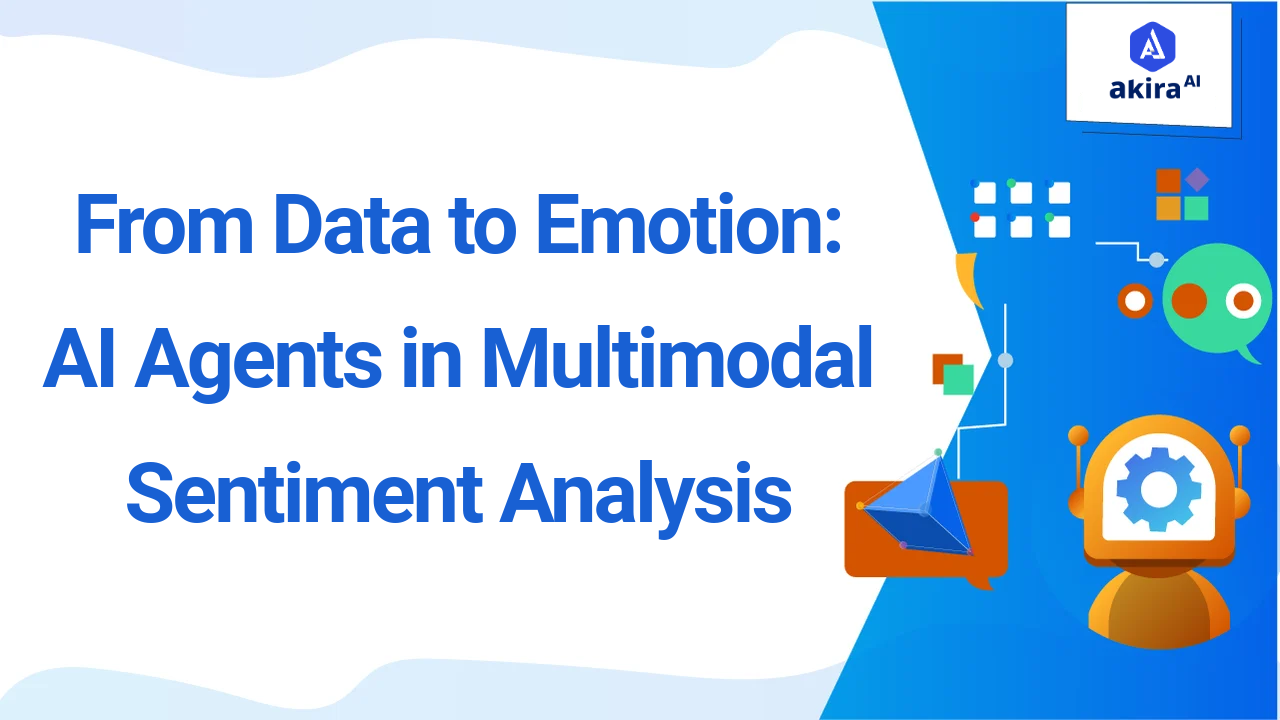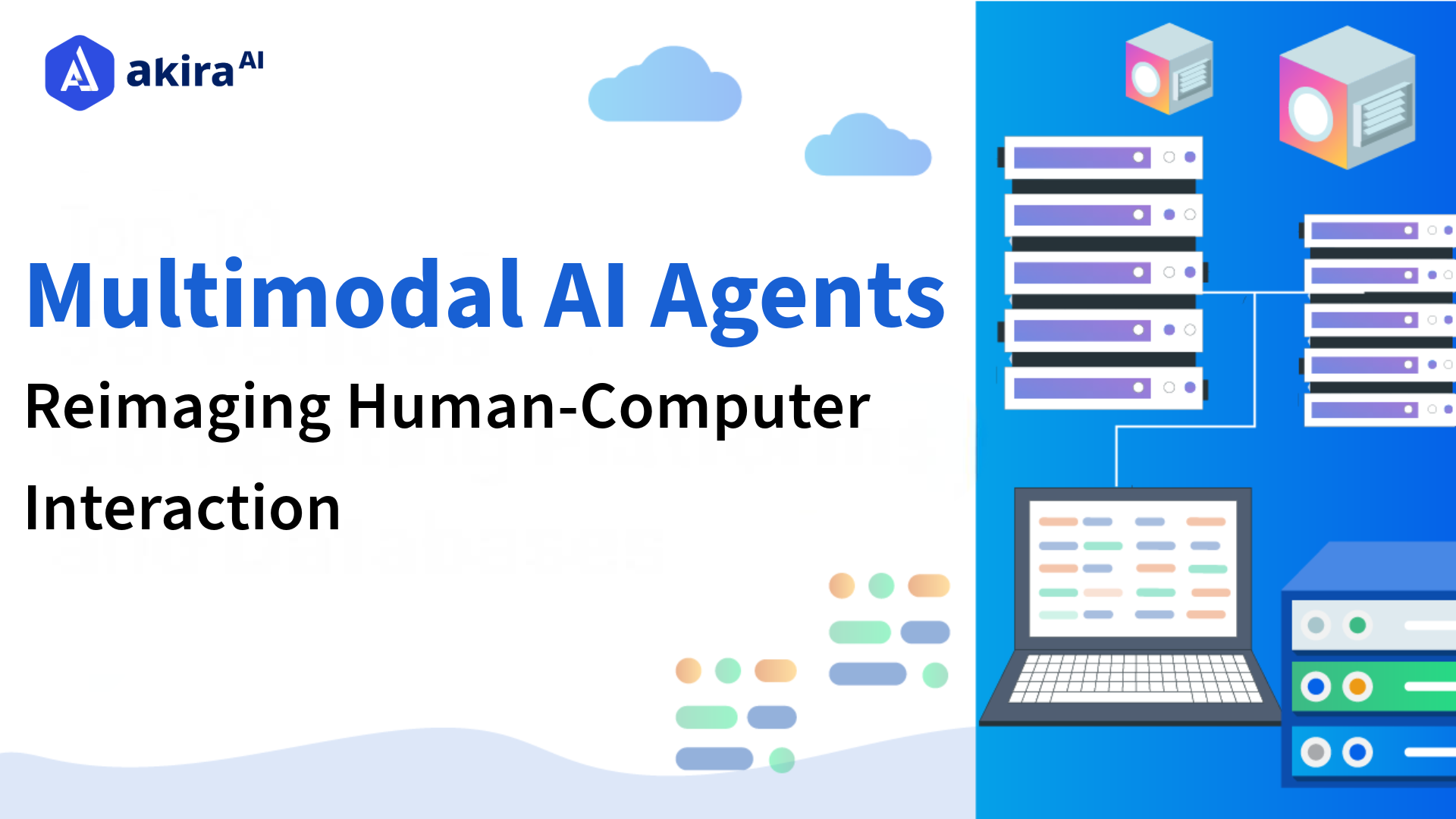Key Insights
-
Multimodal sentiment analysis enhances emotional understanding by analyzing text, speech, and facial expressions, overcoming limitations of traditional text-based methods.
-
AI-powered agents improve customer engagement, marketing personalization, and decision-making by capturing real emotions and providing actionable insights.
-
Industries like retail, healthcare, and customer service benefit from AI-driven sentiment analysis, leading to better user experiences, operational efficiency, and cost savings.

A global retailer faced declining sales despite neutral customer reviews. Traditional sentiment analysis missed hidden frustrations expressed in voice and video feedback. By adopting multimodal sentiment analysis, they uncovered deeper emotions, refined their strategies, and improved customer satisfaction.
In today’s digital world, emotions are complex—text alone isn’t enough. Agentic AI-powered multimodal sentiment analysis helps businesses understand customers, leading to smarter decisions and better engagement. In this blog, we’ll explore how AI Agents for multimodal sentiment analysis are transforming industries, enabling companies to capture real emotions and respond more effectively to customer needs.
What is Multimodal Sentiment Analysis?
Multimodal sentiment analysis evaluates human emotions by analyzing multiple data modalities, including textual content, vocal intonations, and facial expressions. Unlike traditional sentiment analysis, which relies solely on text, this approach provides a comprehensive understanding by considering the full spectrum of communicative signals.
For instance, a person's words might express neutrality, but their tone and facial expressions could reveal underlying sarcasm or frustration. By capturing these nuances, multimodal sentiment analysis offers a more accurate depiction of emotional states.
Key Concepts of MultiModal Sentiment Analysis
Multimodality: Incorporating diverse data streams such as text, audio, and visual inputs to capture a holistic emotional context.
Fusion Techniques: Combining information from various modalities to enhance sentiment classification accuracy. Common methods include early fusion (integrating data at the feature level), late fusion (combining outputs at the decision level), and hybrid fusion (a combination of both).
Deep Learning Models: Utilizing advanced neural networks, including transformer-based architectures like BERT and multimodal transformers, to process and correlate data from multiple modalities.
Feature Extraction: Identifying and extracting relevant features from each modality. For example, in speech analysis, features like pitch, tone, and rhythm are crucial, while in visual analysis, facial landmarks and expressions play a significant role.
Context Awareness: Understanding the broader context by analyzing linguistic, acoustic, and visual cues collectively, ensuring that the sentiment analysis is accurate and contextually relevant.
Traditional Way of Sentiment Analysis
Traditionally, sentiment analysis has been predominantly text-based, employing natural language processing (NLP) techniques to determine the sentiment expressed in written content.
-
Lexicon-Based Sentiment Analysis: This method uses predefined sentiment dictionaries (e.g., SentiWordNet, AFINN) to determine the sentiment of text data. Words are assigned sentiment scores, and an overall sentiment is computed.
-
Handcrafted Feature Engineering: Manually extracts features from different modalities:
-
Text: N-grams, part-of-speech (POS) tagging, syntactic structures.
-
Audio: Pitch, tone, speech rate, and energy.
-
Video: Facial action units (e.g., eyebrow raises, smiles).
3. Decision-Level Fusion (Late Fusion): Each modality (text, audio, video) is analyzed separately using different classifiers (e.g., SVM, Random Forest), and their predictions are combined to make a final decision.
4. Hidden Markov Models (HMM) for Audio and Video: HMM models temporal sequences of audio and facial expressions, capturing emotional transitions over time.
5. Rule-Based and Statistical Methods: These methods rely on domain-specific handcrafted rules (e.g., if a speaker’s tone rises, it might indicate excitement) and statistical techniques like Naïve Bayes for sentiment classification.
Impact on Customers Due to Traditional Sentiment Analysis
Relying solely on text-based sentiment analysis can lead to several challenges:
-
Limited Emotion Recognition: Traditional methods struggled to distinguish subtle emotional differences, often grouping various sentiments (e.g., frustration and disappointment) into broad categories. This led to businesses responding generically rather than addressing customers' genuine emotions.
-
Inaccurate Customer Support Prioritization: Sentiment misclassification caused some urgent complaints to be overlooked or delayed in resolution. As a result, customers faced frustration when critical issues were not addressed promptly.
-
Generic and Impersonal Marketing: Rule-based sentiment analysis led to broad marketing strategies that lacked deep personalization. Customers received generic offers that didn’t always align with their preferences or emotional state.
-
Misinterpretation of Feedback: Sarcasm, irony, and complex emotions were often misunderstood, leading businesses to take incorrect actions. This sometimes resulted in irrelevant responses, making customers feel unheard or misunderstood.
-
Delayed Business Responses: Traditional sentiment analysis was slow in tracking sudden sentiment shifts, especially in real-time social media interactions. Businesses often fail to react quickly to viral complaints or emerging customer dissatisfaction.
Akira AI: Multi-Agent in Action
The architecture of AI agents designed for multimodal sentiment analysis typically involves several key components:
 Fig1: Architecture Diagram of Multi-Modal Sentiment Analysis
Fig1: Architecture Diagram of Multi-Modal Sentiment Analysis
-
Comprehensive Data Collection: The process starts by gathering data from multiple sources, including text, audio, and video, ensuring a diverse and rich input. This allows for a more complete emotional understanding, as different modalities capture unique aspects of human sentiment. The system can analyse verbal and non-verbal cues by incorporating various data types.
-
Specialized Sentiment Processing: Dedicated agents handle each data type separately—text analysis for linguistic sentiment, audio analysis for vocal tone and pitch, and visual analysis for facial expressions and body language. Each agent applies domain-specific models, such as NLP for text, speech recognition for audio, and facial detection for video. This ensures that sentiment from each modality is captured with high precision.
-
Master Orchestrator for Workflow Management: The Master Orchestrator is the central control unit that ensures smooth data flow between different agents. It synchronizes the processing of multimodal inputs and ensures that outputs from different sources are aligned properly. This coordination is essential to maintain accuracy and prevent delays in the sentiment analysis process.
-
Multimodal Fusion for Enhanced Accuracy: The Fusion Agent integrates outputs from the text, audio, and visual analysis agents to create a unified sentiment representation. The system overcomes individual limitations by combining different modalities, such as text-only analysis missing vocal tone or facial expressions. This fusion approach significantly improves sentiment classification accuracy and contextual understanding.
-
Actionable Sentiment Insights: The final output is a sentiment analysis report that provides meaningful insights for businesses and industries. These insights can be used for customer feedback monitoring, mental health detection, marketing strategy adjustments, and real-time decision-making. Organizations can better understand user emotions and improve their responses by leveraging multimodal analysis.
Prominent Technologies in the Space of Multimodal Sentiment Analysis
Several key technologies have propelled the advancement of multimodal sentiment analysis:
-
Transformer-Based Models: Models like BERT and GPT-4 have revolutionized NLP by providing deep contextual understanding, which, when extended to multimodal frameworks, allows for the integration of textual and non-textual data.
-
Speech-Emotion Recognition (SER): Technologies such as Wav2Vec and DeepSpeech analyze vocal attributes to identify emotions, enhancing the understanding of spoken language beyond mere words.
-
Computer Vision: Tools like OpenFace and convolutional neural networks (CNNs) are employed to analyze facial expressions, gestures, and body language, providing visual context to sentiments.
-
Multimodal Fusion Networks: These networks integrate data from various modalities, ensuring the combined information leads to more accurate sentiment predictions.
-
Explainable AI (XAI): As models become more complex, XAI frameworks help understand and interpret AI systems' decision-making processes, ensuring transparency and trustworthiness.
The Customer Experience Specialist AI Agent enhances customer interactions by providing fast, efficient, personalized support, improving satisfaction and streamlining operations.
Successful Implementations of AI Agents in Multimodal Sentiment Analysis
Several real-world applications showcase the effectiveness of multimodal sentiment analysis:
-
Amazon Alexa and Google Assistant: These voice assistants use multimodal sentiment analysis to analyze text (user queries), audio (tone and pitch), and sometimes visual data (smart displays). They adjust responses based on user sentiment, making interactions more natural and personalized.
-
Call Center AI (IBM Watson & NICE CXone): Customer service solutions analyze customer sentiment from voice tone, speech patterns, and text transcriptions. They help businesses detect frustration or dissatisfaction, allowing real-time adjustments to improve customer support.
-
Affectiva (Automotive & Advertising Analytics): Affectiva, an AI company, uses facial expression and voice analysis to assess consumer emotions in real-time. It helps car manufacturers like Ford monitor driver emotions for safety and assists advertisers in measuring audience reactions to video content.
-
YouTube & TikTok Content Moderation: These platforms use multimodal AI to detect harmful or inappropriate content. By analyzing speech, text captions, and facial expressions, they flag offensive videos for review, ensuring safer user experiences.
-
Mental Health Monitoring (Ellipsis Health & CompanionMx): AI-driven mental health tools analyze voice tone, speech patterns, and facial expressions to detect signs of depression or anxiety. Healthcare providers use these insights for early intervention and personalized therapy recommendations.
Operational Benefits of AI Agents in Multimodal Sentiment Analysis
By 2025, AI-driven sentiment analysis is expected to automate 80% of emotion-based decision-making in customer support and healthcare.
-
Productivity Improvements: AI-powered systems increase operational efficiency by 30%, allowing businesses to quickly process vast amounts of emotional data.
-
Efficiency Gains: Multimodal AI enhances sentiment classification accuracy by 25%, ensuring more precise emotional assessments.
-
Cost Savings: Automated sentiment analysis reduces reliance on human intervention, leading to significant cost reductions in customer service and mental health monitoring.
How AI Agents Supersede Other Technologies
AI-driven agents in multimodal sentiment analysis offer several advantages over traditional methods:
-
Real-Time Multimodal Sentiment Detection: Advances in deep learning will enable systems to process text, audio, and video inputs instantly, making sentiment analysis more accurate for applications like virtual assistants, chatbots, and live customer support.
-
Emotionally Adaptive Systems: Future technologies will adjust responses based on detected emotions, improving interactions in virtual therapy, education, and personalized marketing by making responses more empathetic and context-aware.
-
Integration with AR/VR: Sentiment analysis will enhance immersive experiences in augmented and virtual reality by recognizing user emotions in real-time, improving virtual meetings, gaming interactions, and digital learning environments.
-
Advanced Social Media & Content Moderation: Multimodal analysis will help detect and respond to online toxicity, misinformation, and harmful content by analyzing speech, facial expressions, and textual sentiment, ensuring safer digital spaces.
-
Cross-Cultural & Multilingual Emotion Recognition: Future sentiment analysis models will better understand cultural nuances and language-specific emotional cues, making global applications like customer feedback analysis and public opinion tracking more precise.
Next Steps with Multi-Modal Application
Talk to our experts about leveraging AI agents in multimodal sentiment analysis to enhance emotional intelligence, customer experience, and decision-making. Learn how Industries and departments use Agentic Workflows and Decision Intelligence to Become Decision-Centric.


